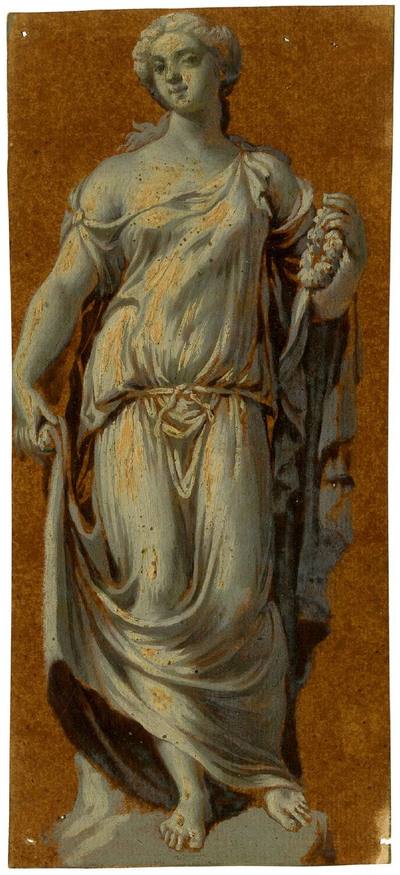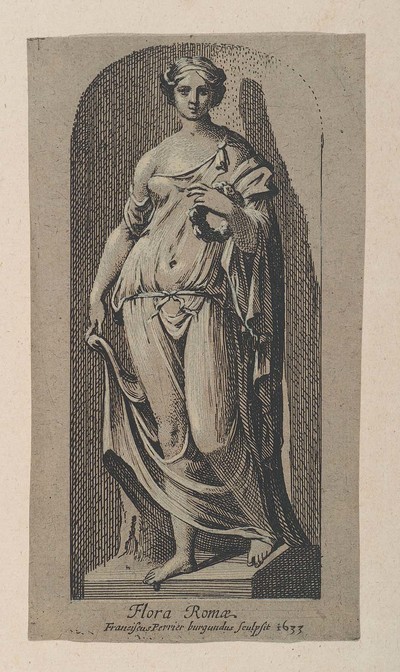This beautiful figure sold at auction in 2011, and, although I had no idea who bought it, I did not forget it. In 2017, it re-appeared at auction, and I was tempted. We didn’t own any figures approaching this in size, but I have always admired large classical figures and consider a big figure of Fortitude marked WEDGWOOD that I added to a private collection particularly fine--much finer than its Enoch Wood counterpart--so I toyed with the idea of going after this large lady. But where was I to put her in our modestly sized house? Having decided that if all else failed, she could sit her at the end of my desk or on the marble surround of my bathtub, I was emboldened to give her a try, so I took a deep breath and did it.
Ahead of the auction, my savvy collector friend Bob Carde and I exchanged emails, and Bob, who is a super-sleuth with a genius for tracking down design sources, correctly suggested the figure portrays the marble figure known as Farnese Flora.
Today Flora can be seen in Naples’s Museo Nazionale, still known as Farnese Flora but described as a Roman copy of a Greek marble of Aphrodite. Over the centuries, Farnese Flora has been much admired for her proverbial beauty, and in particular the exquisite drapery. At around eleven feet tall, her grace and delicacy contrast sharply with her enormity. She has been drawn and copied at reduced scales in materials as varied as ivory, terracotta, marble, lead, and bronze. Most famous is John Michael Rysbrack’s life-size marble copy created in the eighteenth century for the Pantheon at Stourhead.
| Of interest to ceramics collectors are the soft-paste porcelain figures of Farnese Flora that the Bow factory made in the 1760-65 period, after a reduced plaster that may have derived from the terracotta model Rysbrack’ created for his Stourhead statue. Perhaps the Bow figure or a plaster guided and inspired Ralph Wedgwood’s work. |
Today, Farnes Flora looks quite different, and, to my mind, her beauty has faded. That’s because in around 1796 her restored body parts were replaced, and she acquired a new and different head. Also, her left arm and hand holding a garland were replaced; the new hand, positioned differently, now holds a posy, which looks quite awkward.
Today, our Farnese Flora resides happily in our home, and I remain puzzled that she has gone through auction, probably many times, without anyone pinning a name to her. You might expect auction house “experts” to have had some awareness of her form, which was so celebrated in its day that umpteen images of Farnese Flora adorn the decorative arts landscape.

































